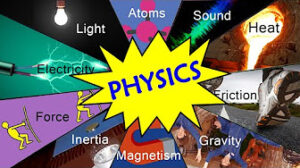Blog, FACTS, GEOGRAPHY, IN ENGLISH
[GS] [Geography] Solar System, The Sun & The Planets
[GS] [Geography] Solar System, The Sun & The Planets
Members of the Solar System
The Sun
-
The Sun is at the centre of the Solar System.
-
Its size is thirteen lakh times as that of the Earth.
-
It is the nearest star to the Earth.
-
It is an ultimate source of energy for life on Earth.
-
Its diameter is 14 lakh Km.
-
It is composed of 71% Hydrogen, 26.5% Helium and 2.5% other elements.
-
Hydrogen and Helium are the main gases present in the Sun.
-
Within the Sun, hydrogen is converted to Helium due to nuclear fusion releasing a tremendous amount of heat and light.
-
It has a surface temperature of about 6000°C.
-
The temperature at the centre is around 15,000,000°C.
-
Shining surface of the sun is called Photo sphere, it appears like a disc, radiate energy and acts as a source of energy.
-
The outer layer of sun’s atmosphere made up of thin hot gases is called Corona. Corona is visible only during a total eclipse of the sun (or with a special solar telescope called Corona graph).
-
The planet travels with the sun through millions of stars in our galaxy at a speed of about 70,000 km per hour.
-
The Sun is about 150 million Km away from the Earth.
-
Light (at the speed of 300,000 km per second) takes about 8.5 minutes to reach the Earth from the Sun.
The Planets
-
These are opaque bodies which continuously revolve around and are lighted by the Sun.
-
There are eight planets in the Solar system.
-
A ninth planet has been recently discovered by NASA named as Carla.
-
The sequence of planets according to their distance from the Sun is Mercury, Venus, Earth, mars, Jupiter, Saturn, Uranus, Neptune.
-
The sequence of planets according to their size (in descending order i.e. form big to small ) is Jupiter, Saturn, Uranus, Neptune, Earth, Venus, mars, Mercury.
-
Jupiter is the biggest and Mercury is the smallest planets of our system.
Classification of Planets
-
The eight planets have been divided into two groups. All the planets of a particular group have some common feature. ‘Terrestrial planets’ or ‘Rocky planets and ‘Jovian planets’ or ‘Gaseous planets’ (Gas giants) are the two groups of planets.
-
The four planets nearest to the Sun – Mercury, Venus, Earth and Mars are called terrestrial planes because their structure is similar to the earth.
-
Other four planets – Jupiter, Saturn, Uranus and Neptune are Jovian planets.
-
Planets are classified into the following two groups inner and outer planets. These are separated by asteroid belt.
-
Pluto is a dwarf planet and its new name is 134340.
MORE BLOGS, VIDEOS, BOOKS, TEST PAPERS & QUIZZES………








